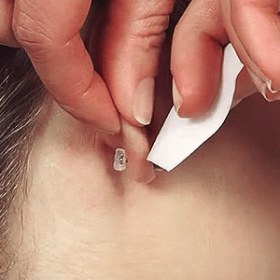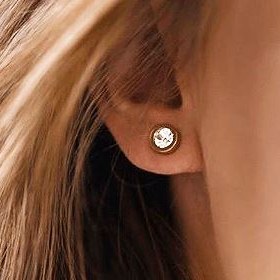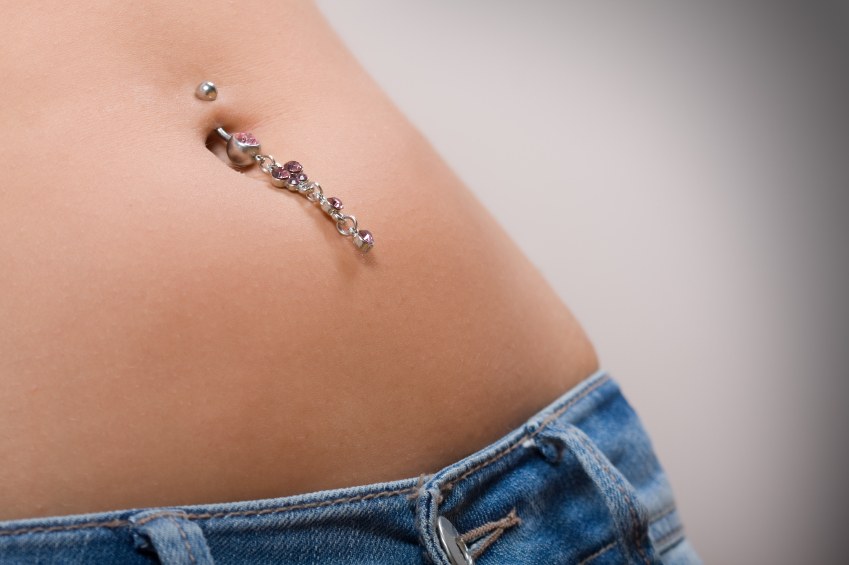Earpiercing x 2 $70
One Earpierce $40
Nosepiercing $75
All prices includes studs and an after care lotion.

Blomdahl Medical Ear Piercing
Blomdahl medical ear piercing is developed entirely upon what is known as "modern aseptic technique" within the health care industry. This means that all our products and methods are safely designed to avoid the spreading of infections during piercing. The sterile method guarantees that the piercing is hygienic and safe.
Blomdahl piercing earrings are not like ordinary earrings. They are specially designed to facilitate the healing and so that you can easily change to regular earrings after the healing period.
Medical Grade Materials | Optimal Healing | Safer To Change Earrings | ||
|---|---|---|---|---|
 |  |  | ||
Blomdahl only use the safest materials as allergies can develop at any time in life and a piercing makes you more vulnerable to inappropriate materials. You can choose between carefully selected plastic and titanium of pure medical qualities. All of our piercing jewellery complies with 2004/96/EC (“The EU Nickel Directive”), and the limits for cadmium and lead as stipulated by EU regulation, (REACH). | When air can circulate around a new piercing, it will heal better. That’s why the earring backs on Blomdahl piercing earrings are always fixed at the tip of the post. | Blomdahl’s piercing earrings have been designed so that the holes will be slightly wider in the beginning and thereby not get so easily damaged when you change earrings. |
Why is it so important to choose safe materials when having your ears pierced?
Approximately 15 percent of all women suffer from nickel allergy, which is the most common form of contact allergy. Contact allergies can develop at any time in life, and an ear piercing makes the skin more vulnerable to inappropriate materials, such as nickel, gold, palladium, cobalt and so on. That is why Blomdahl use only the safest materials. Our piercing earrings are developed in consultation with skin specialists to be suitable for everyone, even those who suffer from allergies. You can choose between carefully selected plastic and titanium of pure medical qualities.
Pure medical titanium is the safest metal. It is the same type of material that is used for medical purposes, for example in dental implants. Therefore, if you wear earrings made from pure, medical titanium, you will not have to worry about nickel and other harmful substances.
Pure medical plastic is unique in that it contains 0% nickel. It is made of the same type of material that is used to sew the skin, so called skin sutures. It has been used for over 40 years within the health care industry and there are no reported cases of allergy. Therefore, if you wear earrings made from medical plastic, you will not have to worry about nickel and other harmful substances.
Pure medical titanium is the safest metal. It is the same type of material that is used for medical purposes, for example in dental implants. Therefore, if you wear earrings made from pure, medical titanium, you will not have to worry about nickel and other harmful substances.
Pure medical plastic is unique in that it contains 0% nickel. It is made of the same type of material that is used to sew the skin, so called skin sutures. It has been used for over 40 years within the health care industry and there are no reported cases of allergy. Therefore, if you wear earrings made from medical plastic, you will not have to worry about nickel and other harmful substances.
How do I take care of my newly pierced ears?
An ear piercing is in fact a small wound. It is important to take proper care of it throughout the healing period (approx. 6–12 weeks), in order to avoid it getting infected. By following the aftercare instructions, you can minimize the risk of infection. In the written aftercare instructions you are advised to clean the hole thoroughly twice a day, using soap and water or Blomdahl Piercing Aftercare cleansing swabs, which are gentle on the skin and easy to use. Watch our video on how to clean a newly pierced ear.
Why should I avoid rotating the piercing earring?
A common misconception is that, if you do not rotate the piercing earring, the skin will get stuck to it. This is not true. What is true is that rotating the piercing earring without first having cleaned your ear, earring and hands thoroughly, can infect the ear piercing.
When can I remove the piercing earring?
If you have had an earlobe pierced, you can remove and replace the piercing earring after 6 weeks, at the earliest. It takes longer for a hole in the cartilage to heal, so if you have had your cartilage pierced, we recommend that you leave the piercing earring for at least 12 weeks.
What should I bear in mind after having replaced the piercing earrings with normal earrings?
It takes up to a year before the holes are completely healed. Hence consider the following:
- Always wear earrings. If you go without, the holes can shrink and/or close completely.
- Take extra care when changing earrings. The skin that has grown within the holes is still thin and delicate and can easily tear, which may cause an infection. Therefore, always make sure to wash your earrings and your hands before the change, and make sure that the area around the holes is kept clean, dry and airy. If you use earrings with earring backs, these should not be pressed tightly against the back of the ear.
- The risk for developing a contact allergy is at its greatest during the first year. This is why it is extra important to wear safe earrings during this time. In consultation with skin specialists, Blomdahl has developed skin friendly jewellery suitable for everybody and especially for those who have just pierced their ears.
How does it feel to have your ears pierced?
Everyone experiences an ear piercing differently. Some say it burns a little, others say they can barely feel it at all. Although children may have longed to get their ears pierced, sometimes they change their mind after the first hole. Because of this, we have developed medical simultaneous ear piercing, which means that both earlobes are pierced at the same time. The whole procedure is faster, feels safer and is more comfortable for the child.
What are the benefits of having both earlobes pierced at the same time?
When children are about to have their ears pierced, both the children themselves and their parents tend to have several concerns. One of these concerns is: does it hurt? Everyone experiences an ear piercing differently. Some say it burns a little, others that they can barely feel it at all. Although children may have longed for getting their ears pierced, it sometimes happens that they change their mind after the first hole. Because of this, we have developed medical simultaneous ear piercing, which means that both earlobes are pierced at the same time. The whole procedure is faster, feels safer and is more comfortable for the child.
Is there an age restriction on having your ears pierced?
In Australia there are no rules governing how old you must be before you can have your ears pierced. However, if you are under legal age, a guardian’s consent is required. It is thus up to each parent to decide if or when they want their children to have an ear piercing. Although the parents are responsible for taking care of their child’s newly pierced ears, it is recommended that the child understands some parts of the aftercare instructions. For example, that no one should touch the newly pierced hole and that it is important to be careful when putting on/taking off T-shirts, etc.
When is a good time of the year to have your ears pierced?
You can have your ears pierced at any time of the year. When swimming in a pool, lake or ocean, consider the following: The longer period of time that has passed since the time of piercing, the better. Avoid putting your head under water. After swimming, clean with either liquid soap and water or with Blomdahl Piercing Aftercare cleansing swabs, which are gentle on the skin and easy to use.
What part of the ear can be pierced?
You can have your earlobe pierced one, two, or even three times, providing there is enough space (see green markings).
You can also pierce the upper ear cartilage, just inside the roll over edge.
NOTE! There is a higher risk of infection when piercing through cartilage – as there is much less blood supply in the cartilage, it does not have the same built-in protection against infection as the soft part of the ear (the ear lobe). Therefore, when having the cartilage pierced, it is especially important to follow the written aftercare instructions that you will receive at the time of piercing. If you notice an infection in the cartilage, we recommend that you remove the earring, clean/disinfect and seek immediate medical attention.
You can also pierce the upper ear cartilage, just inside the roll over edge.
NOTE! There is a higher risk of infection when piercing through cartilage – as there is much less blood supply in the cartilage, it does not have the same built-in protection against infection as the soft part of the ear (the ear lobe). Therefore, when having the cartilage pierced, it is especially important to follow the written aftercare instructions that you will receive at the time of piercing. If you notice an infection in the cartilage, we recommend that you remove the earring, clean/disinfect and seek immediate medical attention.
